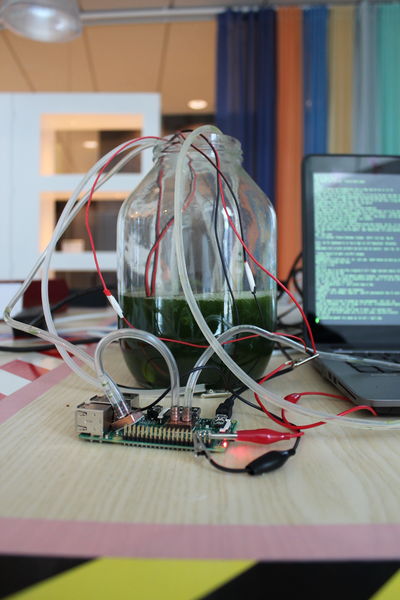File:7-exhibition16.JPG

Original file (2,304 × 3,456 pixels, file size: 3.3 MB, MIME type: image/jpeg)
Critter Compiler, Helen Pritchard, Queen Mary, University of London
The “Critter Compiler” is a fabulation contaminated by algae, grown by the heat of the CPU, that collaborates with neural networks to rewrite George Eliot’s novel Middlemarch.
Background:
In 1997 Oak Ridge National Laboratory announced the development of a living sensor, the “Critters on a Chip,” a tiny light-sensitive computer chip coated with bioluminescent bacteria, placed on a standard integrated circuit. In the presence of targeted substances including petrochemical pollutants and explosives, the bacteria emitted a visible blue-green light. Small, inexpensive and fast, critter chips imagined an affective scene in which microbes could be used to monitor remediation and bioaccumulation at sites contaminated by petrochemicals.
Today the speculative scenes of the bio-economy are enduring, taking for instance the bioluminescent-bioreporter integrated circuits that monitor toulene levels or the fluorescent microbes extracting precious metals, for computers, from mine waste. Critter Chips emerge from the entangled scenes of extraction, pollution, computation and labor. Scenes, I argue, in which computational execution is increasingly instantiated (in both a metaphysical and computational sense) by the extension of computation into the bodies of nonhuman organisms– what I refer to as toxic execution.
File history
Click on a date/time to view the file as it appeared at that time.
| Date/Time | Thumbnail | Dimensions | User | Comment | |
|---|---|---|---|---|---|
| current | 09:25, 13 May 2016 |  | 2,304 × 3,456 (3.3 MB) | Exe (talk | contribs) |
You cannot overwrite this file.
File usage
The following page uses this file: